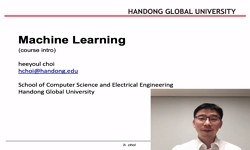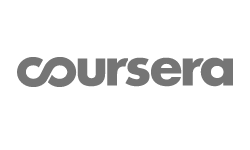Recently, there has been a growing interest in using machine learning methods for causal inference to estimate the average treatment effect and the conditional average treatment effects. The purposes of this paper are to introduce machine learning met...
http://chineseinput.net/에서 pinyin(병음)방식으로 중국어를 변환할 수 있습니다.
변환된 중국어를 복사하여 사용하시면 됩니다.
- 中文 을 입력하시려면 zhongwen을 입력하시고 space를누르시면됩니다.
- 北京 을 입력하시려면 beijing을 입력하시고 space를 누르시면 됩니다.

머신러닝 기반의 인과 포레스트 기법을 활용한 처치효과 검증: 교내 동아리활동 참여가 협업능력에 미치는 효과를 중심으로 = Evaluating the Effects of School Club Activities on Collaborative Competency Using Random Forests for Causal Inference
한글로보기https://www.riss.kr/link?id=A107942564
- 저자
- 발행기관
- 학술지명
- 권호사항
-
발행연도
2021
-
작성언어
-
- 주제어
-
KDC
300
-
등재정보
KCI등재
-
자료형태
학술저널
- 발행기관 URL
-
수록면
55-78(24쪽)
-
KCI 피인용횟수
0
- 제공처
-
0
상세조회 -
0
다운로드
부가정보
다국어 초록 (Multilingual Abstract)
Recently, there has been a growing interest in using machine learning methods for causal inference to estimate the average treatment effect and the conditional average treatment effects. The purposes of this paper are to introduce machine learning methods for causal inference and to investigate the effects of school club activities on students’ collaborative competency using one particular machine learning method based on random forests, called ‘casual forests’. Specifically, this paper uses causal forests to estimate the average effect and heterogeneous effects of school club activities on students' collaborative competency. As a result, we found that the average effect of school club participation is significantly positive, and this finding highlights the importance of school club activities as a complement to subject-centered curriculum to enhance students’ social development. Our additional analysis found that there are no significant, heterogeneous treatment effects depending on gender, peer relationship, and teacher-student relationship.
참고문헌 (Reference)
1 교육부, "학생의 꿈과 끼를 키워 행복교육을 실현하는 중학교 자유학기제 시행 계획(안)"
2 교육과학기술부, "초‧ 중‧ 고 창의적 체험활동 교육과정 해설"
3 박경미, "청소년활동의 효과에 대한 유형화 분석" 한국청소년활동학회 6 (6): 95-121, 2020
4 한국청소년활동진흥원, "청소년활동을 통해 키울 수 있는 핵심역량은?"
5 황여정, "청소년활동 참여 경험이 중학생의 갈등해결역량에 미치는 영향" 학습자중심교과교육학회 20 (20): 1097-1125, 2020
6 김아름, "청소년의 창의적 체험활동 참여가 협업능력에 미치는 영향: 자아존중감의 매개효과를 중심으로" 학습자중심교과교육학회 20 (20): 691-708, 2020
7 전자배, "청소년의 동아리활동이 협업능력에 미치는 영향: 자아유능감의 매개를 중심으로" 한국청소년정책연구원 31 (31): 101-127, 2020
8 이승렬, "청소년 동아리 조직유형별 활동 참여의결정요인 분석" 한국청소년학회 20 (20): 407-431, 2013
9 교육부, "창의적 체험활동 교육과정(안전한 생활 포함)"
10 김경미, "참여하는 청소년은 행복한가? : 사회참여 활동유형과 성별에 따른 공동체 의식의 매개효과" 사회과학연구원 46 (46): 141-164, 2020
1 교육부, "학생의 꿈과 끼를 키워 행복교육을 실현하는 중학교 자유학기제 시행 계획(안)"
2 교육과학기술부, "초‧ 중‧ 고 창의적 체험활동 교육과정 해설"
3 박경미, "청소년활동의 효과에 대한 유형화 분석" 한국청소년활동학회 6 (6): 95-121, 2020
4 한국청소년활동진흥원, "청소년활동을 통해 키울 수 있는 핵심역량은?"
5 황여정, "청소년활동 참여 경험이 중학생의 갈등해결역량에 미치는 영향" 학습자중심교과교육학회 20 (20): 1097-1125, 2020
6 김아름, "청소년의 창의적 체험활동 참여가 협업능력에 미치는 영향: 자아존중감의 매개효과를 중심으로" 학습자중심교과교육학회 20 (20): 691-708, 2020
7 전자배, "청소년의 동아리활동이 협업능력에 미치는 영향: 자아유능감의 매개를 중심으로" 한국청소년정책연구원 31 (31): 101-127, 2020
8 이승렬, "청소년 동아리 조직유형별 활동 참여의결정요인 분석" 한국청소년학회 20 (20): 407-431, 2013
9 교육부, "창의적 체험활동 교육과정(안전한 생활 포함)"
10 김경미, "참여하는 청소년은 행복한가? : 사회참여 활동유형과 성별에 따른 공동체 의식의 매개효과" 사회과학연구원 46 (46): 141-164, 2020
11 김정주, "지역사회에서 청소년 동아리 활동 실태와 지원 방안 연구" 한국청소년개발원 2003
12 조영희, "중학생의 자아존중감과 협동심 간의관계에서 부모 및 교사관계의 매개효과 :성별 차이를 중심으로" 한국교육학회 59 (59): 185-213, 2021
13 심우정, "중학생의 동아리 활동 참여 수준 및 참여 동아리 유형 관련 요인" 교육연구소 21 (21): 433-462, 2020
14 관계부처 합동, "제6차 청소년정책기본계획(2018~2022)"
15 김한솔, "자율동아리활동 참여특성에 따른 청소년활동 핵심역량 차이분석" 한국청소년활동학회 5 (5): 5-22, 2019
16 이승희, "의사소통 및 협업능력 관련 영향요인 간관계 구조분석: H대학교 학생을 중심으로" 학습자중심교과교육학회 18 (18): 203-222, 2018
17 김도희, "아동이 지각한 부모양육태도와 또래관계의 관계에서 자아존중감과 협동심의 직렬다중매개효과" 한국디지털정책학회 18 (18): 485-495, 2020
18 전란영, "부모의 자율성 지지와 구조제공이 아동의 그릿을 매개로 아동의 협동심에 미치는 영향" 학습자중심교과교육학회 20 (20): 117-139, 2020
19 이진실, "매개효과 분석에서 오차 간 상관을 고려한 경향점수 역확률가중치 활용방법" 한국자료분석학회 23 (23): 971-984, 2021
20 교육부, "동아리활동 길라잡이: 중 ‧ 고통합용"
21 김영서, "고등학생의 청소년활동 참여에 따른 잠재프로파일 유형과 공동체의식 및 주관적 행복감의 차이" 한국조사연구학회 22 (22): 91-125, 2021
22 김나영, "경향점수를 활용한 교내 동아리 활동 참여가 고등학생의 학업 및 사회적 자아개념에 미치는 영향 분석" 교육발전연구소 29 (29): 291-308, 2019
23 Tibshirani, J., "grf: Generalized Random Forests. R package version 2.0.2"
24 Davis, J., "Using Causal Forests to Predict Treatment Heterogeneity : An Application to Summer Jobs" 107 (107): 546-550, 2017
25 Suk, Y., "Tuning Random Forests for Causal Inference under Cluster-level Unmeasured Confounding" Multivariate Behavioral Research
26 Steiner, P.M., "The Oxford Handbook of Quantitative Methods" Oxford University Press 236-258, 2013
27 Hastie, T., "The Elements of Statistical Learning: Data Mining, Inference, and Prediction" Springer 2017
28 Rosenbaum, P.R., "The Central Role of the Propensity Score in Observational Studies for Causal Effects" 70 : 41-55, 1983
29 van der Laan, M.J., "Targeted Maximum Likelihood Learning" 2 (2): 1-38, 2006
30 Cohen, J., "Statistical Power Analysis for the Behavioral Sciences" Academic Press 1977
31 Suk, Y., "Robust Machine Learning for Treatment Effects in Multilevel Observational Studies under Cluster-level Unmeasured Confounding" 0 (0): 1-34, 2021
32 Athey, S., "Recursive Partitioning for Heterogeneous Causal Effects" 113 (113): 7353-7360, 2016
33 Suk, Y., "Random Forests Approach for Causal Inference with Clustered Observational Data" 0 (0): 1-24, 2020
34 Künzel, S. R., "Metalearners for Estimating Heterogeneous Treatment Effects Using Machine Learning" 116 (116): 4156-4165, 2019
35 Suk, Y., "Hybridizing Machine Learning Methods and Finite Mixture Models for Estimating Heterogeneous Treatment Effects in Latent Classes" 46 (46): 323-347, 2020
36 Athey, S., "Generalized Random Forests" 47 (47): 1148-1178, 2019
37 Cook, T.D., "Experimental and Quasi-experimental Designs for Generalized Causal Inference" Houghton Mifflin 2002
38 Wager, S., "Estimation and Inference of Heterogeneous Treatment Effects Using Random Forests" 113 (113): 1228-1242, 2018
39 Athey, S., "Estimating Treatment Effects with Causal Forests : An Application" 5 (5): 37-51, 2019
40 Imai, K., "Estimating Treatment Effect Heterogeneity in Randomized Program Evaluation" 7 (7): 443-470, 2013
41 Rubin, D.B., "Estimating Causal Effects of Treatments in Randomized and Nonrandomized Studies" 66 : 688-701, 1974
42 김준엽, "Drawing Causal Inferences Using Propensity Score Methods in Educational Research" 한국교육평가학회 21 (21): 219-242, 2008
43 Hill, J.L., "Bayesian Nonparametric Modeling for Causal Inference" 20 (20): 217-240, 2011
44 Schafer, J.L., "Average Causal Effects from Nonrandomized Studies : A Practical Guide and Simulated Example" 13 (13): 279-313, 2008
45 Dorie, V., "Automated versus Do-it-yourself Methods for Causal Inference : Lessons Learned from a Data Analysis Competition" 34 (34): 43-68, 2019
46 Austin, P.C., "An Introduction to Propensity Score Methods for Reducing the Effects of Confounding in Observational Studies" 46 : 399-424, 2011
동일학술지(권/호) 다른 논문
-
- 한국조사연구학회
- 이진숙 ( Jin-sook Lee )
- 2021
- KCI등재
-
제주지역 고령의 선주민이 정착이주민에 대해 가지는 태도 연구
- 한국조사연구학회
- 한지은 ( Ji-eun Han )
- 2021
- KCI등재
-
전·월세 상한제가 전세시장 분리에 미치는 영향: 서울 대단지 아파트를 중심으로
- 한국조사연구학회
- 민인식 ( Min Insik )
- 2021
- KCI등재
-
생활만족도의 지역 간 차이: 아파트의 맥락효과를 중심으로
- 한국조사연구학회
- 조재훈 ( Jaehoon Cho )
- 2021
- KCI등재
분석정보
인용정보 인용지수 설명보기
학술지 이력
| 연월일 | 이력구분 | 이력상세 | 등재구분 |
|---|---|---|---|
| 2026 | 평가예정 | 재인증평가 신청대상 (재인증) | |
| 2020-01-01 | 평가 | 등재학술지 유지 (재인증) |  |
| 2017-01-01 | 평가 | 등재학술지 유지 (계속평가) |  |
| 2013-01-01 | 평가 | 등재 1차 FAIL (등재유지) |  |
| 2010-01-01 | 평가 | 등재학술지 유지 (등재유지) |  |
| 2008-01-01 | 평가 | 등재 1차 FAIL (등재유지) |  |
| 2005-01-01 | 평가 | 등재학술지 선정 (등재후보2차) |  |
| 2004-01-01 | 평가 | 등재후보 1차 PASS (등재후보1차) |  |
| 2003-01-01 | 평가 | 등재후보학술지 선정 (신규평가) |  |
학술지 인용정보
| 기준연도 | WOS-KCI 통합IF(2년) | KCIF(2년) | KCIF(3년) |
|---|---|---|---|
| 2016 | 0.67 | 0.67 | 0.78 |
| KCIF(4년) | KCIF(5년) | 중심성지수(3년) | 즉시성지수 |
| 0.7 | 0.73 | 1.041 | 0.22 |




 KISS
KISS






